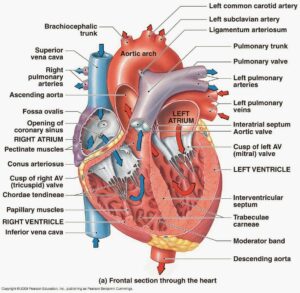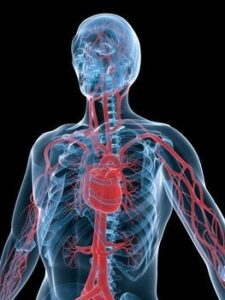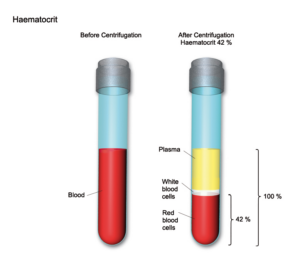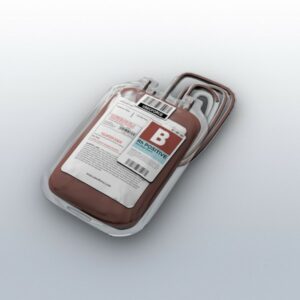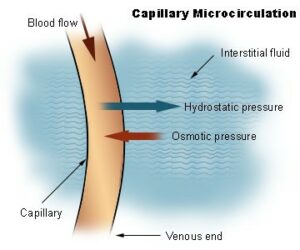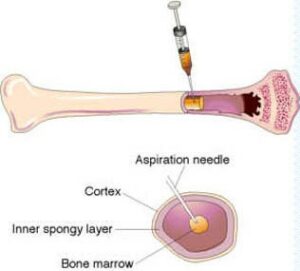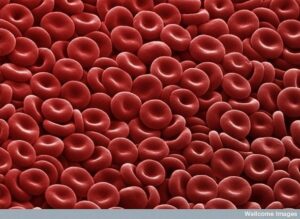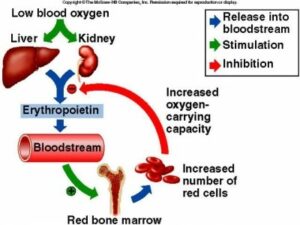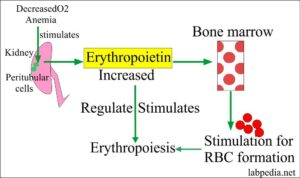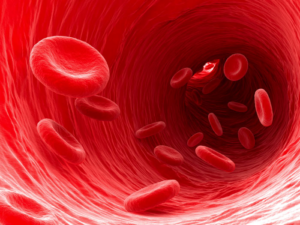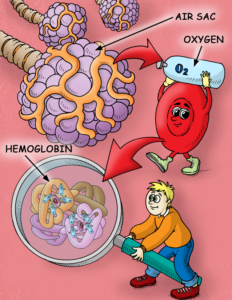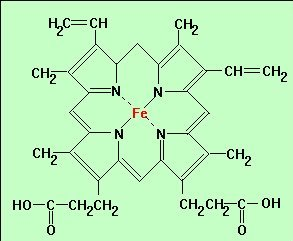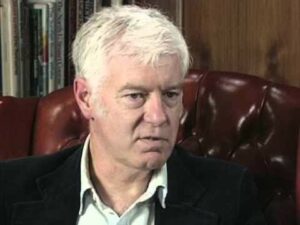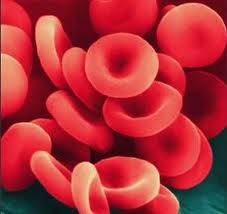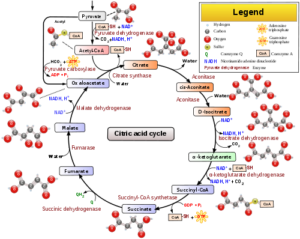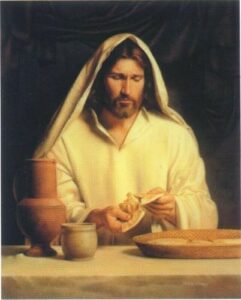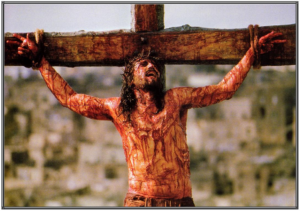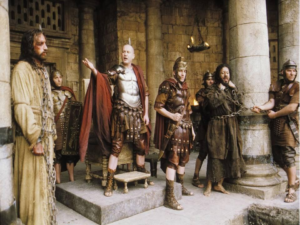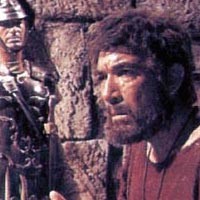The Miracle of Human Blood, Created by God
By
Dr Richard Kent MB BS
Website www.drrichardkent.org
Email: [email protected]
Human blood cells
A close-up of blood cells
- Leviticus 17:11“The life of the body is in its blood”
- Blood is truly the river of life.
- Every cell in the body gets its nutrients from blood.
- Blood is a mixture of two components: cells and plasma.
The human heart
- An average heart pumps 70 ml per heartbeat.
- An average heartbeat is 72 beats per minute.
- An average heart pumps 1.3 gallons per minute.
- An average heart pumps 1,900 gallons per day,
- An average heart pumps 700,000 gallons per year,
- An average heart pumps 48 million gallons by the time someone is 70 years old.
- That’s not bad for a 10-ounce pump!
………………….
The Human Circulatory System
- The heart pumps blood through the arteries, capillaries and veins to provide oxygen and nutrients to every cell of the body.
- The blood also carries away waste products.
- The adult human body contains approximately 5 litres of blood (9 pints approximately)
- The blood makes up 7 percent of a person’s body weight.
- Approximately 3 litres of blood are plasma and the rest is the cellular portion.
Clotted blood
If you centrifuge human blood, you will see that it separates into straw coloured plasma and approximately 42% red blood cells, with a small layer of white cells as well.
Blood transfusion bag
Blood is the medium of transport in the body.
The fluid portion of the blood, the plasma, is a straw-coloured liquid composed primarily of water.
All the important nutrients, the hormones, and the clotting proteins as well as the waste products are transported in the plasma.
Red blood cells and white blood cells are also suspended in the plasma.
Plasma from which the clotting proteins have been removed is serum.
Plasma
- Plasma is the liquid portion of the blood.
- Plasma is a clear, yellowish fluid.
- Blood cells like red blood cells float in the plasma.
- Plasma is 90 percent water.
- The other 10 percent dissolved in plasma is essential for life.
- These dissolved substances are circulated throughout the body and diffuse into tissues and cells where they are needed.
- Waste materials flow in the opposite direction, from where they are created in the cells into the bloodstream, where they are removed either in the kidneys or lungs.
- Also dissolved in plasma are
Electrolytes,
Nutrients
Vitamins (absorbed from the intestines or produced by the body),
Hormones,
Clotting factors,
Proteins such as albumin and immunoglobulins (antibodies to fight infection).
Plasma distributes the substances it contains as it circulates throughout the body.
- Blood pressure pushes fluid out of blood vessels
- Proteins make up a large part of the 10 percent of material dissolved in plasma and are responsible for oncotic pressure.
Electrolytes.
Electrolytes are a large category of substances dissolved in plasma. They include:
- Sodium
- Potassium
- Chloride
- Bicarbonate
- Calcium
- Magnesium
These chemicals are absolutely essential in many bodily functions including
- Fluid balance,
- Nerve conduction,
- Muscle contraction (including the heart),
- Blood clotting
- Ph balance.
Other materials dissolved in plasma are
- Carbohydrates (glucose),
- Cholesterol,
- Hormones
Red blood cells, white blood cells, and platelets
- The red blood cells carry oxygen from the lungs
- The white blood cells help to fight infection.
- The platelets are parts of cells that the body uses for clotting.
All blood cells are produced in the bone marrow
Red blood cells are produced in the bone marrow.
This process is called haematopoiesis.
All blood cells develop from the same type of cell, called the pluripotential hematopoietic stem cell.
This group of cells has the potential to form any of the different types of blood cells and also to reproduce itself.
Red blood cells are called erythrocytes.
- Red blood cells are disk-shaped cells produced in the bone marrow.
- Red blood cells have no nucleus, and their cytoplasm is filled with haemoglobin.
- Haemoglobin is a red-pigmented protein that binds loosely to oxygen atoms and carbon dioxide molecules.
The chemical structure of Haemoglobin
- Oxygen is inhaled in the lungs.
- Oxygen binds to haemoglobin in the lungs
- Haemoglobin transports the oxygen to the tissue.
- Oxygen separates from the haemoglobin in the tissues of the body, providing oxygen to all of the tissues of the body.
Life of red blood cells
A red blood cell circulates for about 120 days and is then destroyed in the spleen.
Regulation of red blood cell formation
The production of red blood cells is regulated by
- A Hormone called erythropoietin
- Low oxygen levels.
As the oxygen level in the body decreases, the kidneys produce more erythropoietin to stimulate red cell production on the bone marrow.
The hormone erythropoietin a wonderful example of Irreducible Complexity!
The production of red blood cells is regulated by erythropoietin, a hormone produced in the kidney.
But the kidney requires oxygen, or it will quickly die!
Red blood cells deliver oxygenated blood to the kidney.
But blood cells can only be produced in the bone marrow, under the influence of the hormone erythropoietin.
Irreducible Complexity is demonstrated here!
- The bone marrow cannot produce red blood cells without stimulation from the hormone erythropoietin, manufactured in the kidneys.
- The kidneys cannot survive without oxygen provided in the red blood cells.
- There are therefore two biological systems, which cannot function unless both systems are fully developed.
- Both systems are highly complex, and could not possibly have evolved simultaneously!
- This is a major problem for evolutionists, who teach that life evolved, by chance, in the primordial slime.
- The human circulatory system is tremendous evidence of the existence of God.
- The production of red blood cells was planned and engineered by a supreme intelligence. His name is Jesus Christ!
Blood cells in the capillaries
- A red blood cell looks like disc that is round and flat, like a shallow bowl, but concave on both sides.
- A red blood cell has no nucleus.
- The nucleus is extruded from the cell as it matures.
- A red blood cell can squeeze in single file through the capillaries, which are minute blood vessel.
- Each red blood cell contains haemoglobin, a molecule specially designed to hold oxygen.
How does Haemoglobin carry Oxygen and Carbon Dioxide?
The chemical structure of Haemoglobin
Oxygen is transported in combination with the iron molecule of the haem group
The haemoglobin molecule shown has a very special structure created to carry oxygen in the blood, as explained by Michael Denton.
Michael J. Denton, Nature’s Destiny, The Free Press, 1998, p. 202.
- “It would seem that in designing an oxygen-transporting molecule from first principles we are led inevitably to a molecule very like haemoglobin”.
- “The evidence is consistent with the possibility that haemoglobin is the ideal and unique respiratory pigment for metabolically active air-breathing organisms”.
- “The elegance of the way the haemoglobin system functions is simply astounding, and a source of wonder to everyone who is familiar with its intricate ingenuity.”
Iron is essential in the production of red blood cells
Iron is a toxic compound, but is at the very centre of a haemoglobin molecule.
The element iron is toxic to the human body, and yet is essential for the transport of oxygen in the blood.
God has arranged that the human body absorbs exactly enough iron to supply the needs of haemoglobin, but not too much iron, which would kill the body.
In the last century in London many people died of iron toxicity, because water was pumped through iron pipes.
To me it is inconceivable that are highly complex molecule such as haemoglobin could arise by chance in the primordial slime 3.8 billion years ago.
According to evolutionists the age of the Earth is 4.6 billion years, and the evolution of “simple cells”, by chance, was 3.8 billion years ago.
I would like to point out the following
- All living cells contain DNA, which is the most complex genetic code in the universe, and could not possibly have evolved by chance.
- All living cells require oxygen.
- Without oxygen a cell will die within a few minutes.
- I am unclear how evolutionists believe that haemoglobin, one of the most complex molecules in the human body, evolved over billions of years, when a single cell will die within minutes without oxygen!
- This is a further example of irreducible complexity.
Removal of Carbon Dioxide by red blood cells
Besides carrying oxygen to the cells of the body, the red blood cells help to remove carbon dioxide (Co2) from the body.
Carbon dioxide is formed in the cells as a by-product of the Krebs citric acid cycle.
The Krebs citric acid cycle
Carbon dioxide enters the blood in the capillaries and is brought back to the lungs and released there and then exhaled as we breathe.
The enzyme Carbonic Anhydrase
Red blood cells contain an enzyme called carbonic anhydrase which is essential to convert Carbon Dioxide and Water to Carbonic Acid.
Carbonic acid is formed, which then separates into hydrogen ions and bicarbonate ions:
This is basically how the toxic Carbon dioxide is removed from the tissue, and excreted in the lungs, in the air we all breathe out.
This is all remarkably complex.
Anyone who thinks that this all happened by chance has remarkable faith in the laws of chance!
In my opinion, the evolution of red blood cells is totally flawed!
The Blood of Jesus Christ
We cannot discuss human blood without discussing the Blood of Jesus Christ.
Jesus at the Last Supper
Jesus said in Matthew 26:28
“For this is My Blood, the blood of the New Covenant, which is poured out for many for the remission of sins”
The Blood of Jesus Christ his Son cleanses us from all sin
We are told in 1 John 1:7 that “the Blood of Jesus Christ His Son cleanses us from all sin”.
Jesus on the Cross
John the Baptist said, “the Lamb of God Who takes away the sin of the world”,
John 1:29
The basis of Christianity is that we are ALL sinful.
Romans 3: 23 for all have sinned and fall short of the glory of God.
Jesus Christ is God, and literally died in our place, so that we could be forgiven, and go to heaven when we die.
Jesus Christ and Barabbas
Jesus Christ and Barabbas were the two condemned prisoners displayed by Pontius Pilate
Jesus Christ and Barabbas were presented to the crowds outside the praetorium.
Barabbas
Barabbas, a murderer, was chosen by the crowds and released.
Barabbas was set free, which is a picture of the Gospel
The word Barabbas means “son of the father” in Hebrew.
Barabbas was a murderer.
Jesus said, in John 8:44, “you belong to your father, the devil”, so Barabbas was a son of the devil.
Jesus Christ is the Son of God
At the Crucifixion, Jesus Christ, the Son of God, died in the place of a son of the Satan. This is a picture of the Gospel (Good News) of Jesus Christ.
If you are not a Believer in Jesus Christ, and would like to go to Heaven when you die, please click on the link below, on this website:
https://drrichardkent.org/when-you-die-would-you-like-to-go-to-heaven/
I hope you have enjoyed this teaching and associated YouTube videos
God bless you!
Richard
Dr Richard Kent MB BS
Website: www.drrichardkent.org
Email: [email protected]


